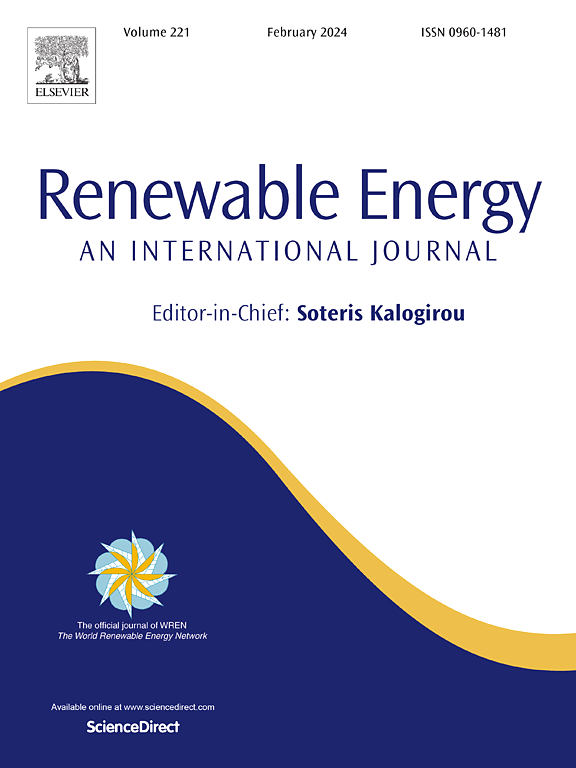Proposal of an advanced hybrid multigeneration plant using solar energy for sustainable hydrogen generation: A thermodynamic and environmental analysis
IF 9
1区 工程技术
Q1 ENERGY & FUELS
引用次数: 0
Abstract
The newly suggested paper comprehensively delves into the holistic production of sustainable hydrogen, electricity, freshwater, heating, and cooling. This combined study utilizes different systems; solar tower, supercritical CO2 Brayton cycle (sBC), transcritical CO2 Rankine cycle with ejector (tRC), organic Rankine cycle (ORC), desalination component (MED), and proton exchange membrane (PEM). The efficiency and sustainability of the recommended cycle are evaluated by thermodynamic and environmental impact assessments. Meanwhile, a parametric investigation is performed to define the impact of the strategy values on the modeled scheme's performance and product rates. The examination results show that the energetic efficiencies of the sBC, tRC, and ORC are 11.81 %, 29.39 %, and 9.19 %, respectively. For the same order, the exergy performance indicators are 24.66 %, 21.75 %, and 33.16 %, respectively. The developed overall system had 38.66 % of energetic performance and 34.14 % of exergetic performance. The cycle's net power generation capability is 8041 kW. Furthermore, out of all of the components of the structure, the solar tower unit had the greatest exergetic destruction rate. The combined plant design is a more environmentally friendly choice than the single energy conversion scheme, based on the results of an environmental analysis.

求助全文
约1分钟内获得全文
求助全文
来源期刊

Renewable Energy
工程技术-能源与燃料
CiteScore
18.40
自引率
9.20%
发文量
1955
审稿时长
6.6 months
期刊介绍:
Renewable Energy journal is dedicated to advancing knowledge and disseminating insights on various topics and technologies within renewable energy systems and components. Our mission is to support researchers, engineers, economists, manufacturers, NGOs, associations, and societies in staying updated on new developments in their respective fields and applying alternative energy solutions to current practices.
As an international, multidisciplinary journal in renewable energy engineering and research, we strive to be a premier peer-reviewed platform and a trusted source of original research and reviews in the field of renewable energy. Join us in our endeavor to drive innovation and progress in sustainable energy solutions.
 求助内容:
求助内容: 应助结果提醒方式:
应助结果提醒方式:


